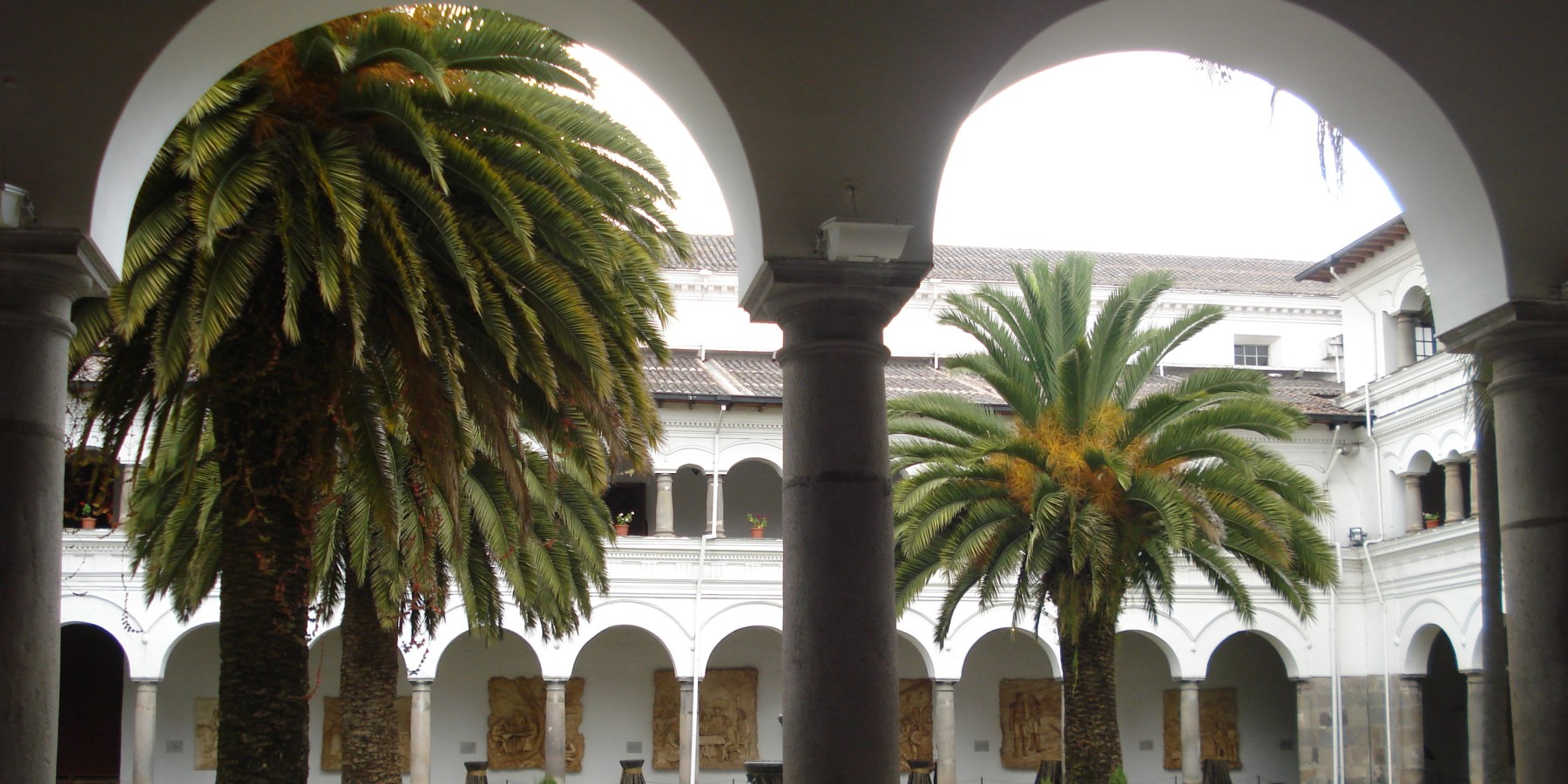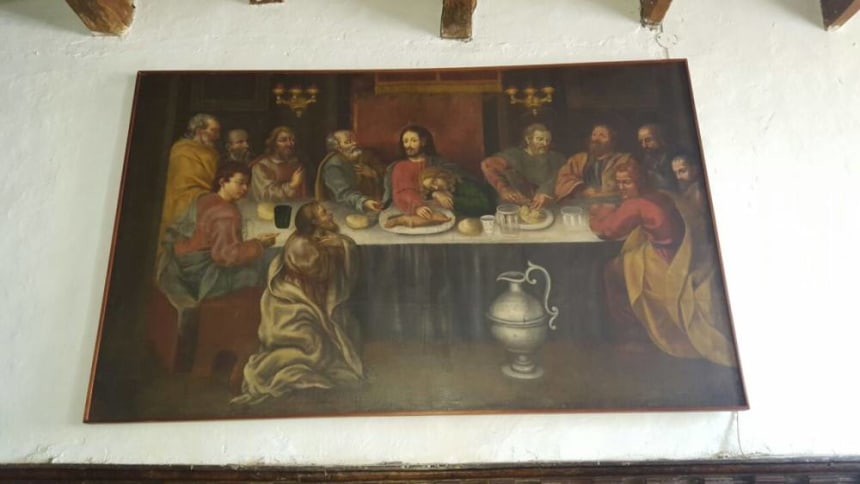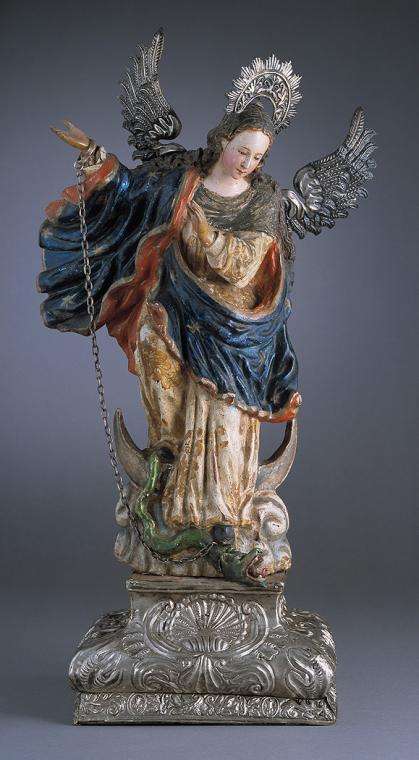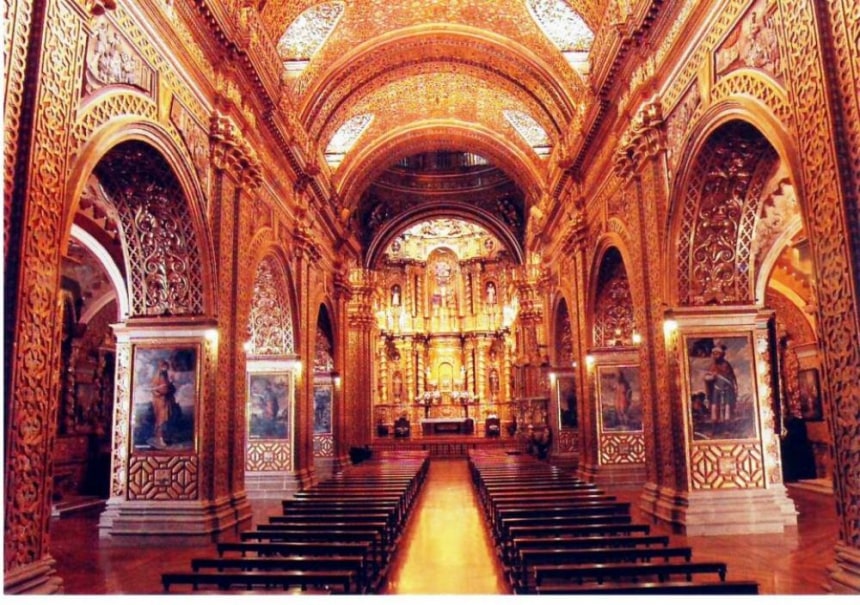
On the course of the colonial era, Quito became a flourishing center of artistic production, exporting works to many other regions of Spanish America. The origins of this artistic boom date back to the year of the Spanish foundation of Quito, in 1534. Flemish Franciscan artists and friars, Joost van Rijcke van Marselaer and Pedro Gosseal, established the School of Saint John the Evangelist in their convent. They thought a generation of Indians how to paint the pictures and carve the sculptures and altarpieces that were so urgently needed by the many newly founded churches and monasteries in the region.
The initial influences came from the Flemish Franciscans, but later other Spanish artists such as Diego de Robles and Italians such as Mateo Perez D’Alessio and Bernardo de Bitti introduced new techniques that were the origin of the School of Quito, a dynamic artistic movement influenced by Italian, Flemish, Andalusian, Moorish, Mannerist and Baroque.
An important early figure was the Quito-born Mestizo Pedro Bedón (1556-1621). Educated in Lima with the Italian painter Bernardo de Bitti, this Dominican priest returned home to combine the duties of Dominican priest with work as painter. He is best-known for his illuminated manuscripts.
"Our lady of the staircase" by Dominican friar Pedro Bedón. Ca. 1556.
Indigenous influence is not immediately apparent in painting or sculpture despite the fact that so much of it was produced by Indians. The features of Christ, the Virgin and saints are European, but in sculpture the proportions of the bodies are often distintnctly Andean: broad chested and short-legged. In both painting, and sculpture the taste –so characteristic of Colonial art in the Andes – for patterns in gold applied over the surface of gaments may perhaps be related to the high value accorded to textiles in pre-conquest times (Kuntstaetter & Kuntstaetter, 2007).
The Indian Andrés Sánchez Gallque studied in with the Franciscans and Dominicans. Around 1599 he made his most famous painting entitled “The blacks from Esmeraldas”, depicting three black leaders using European costumes and Indian adornments.
"The mulattoes from Esmeraldas" made by Andrés Sánez Gallque in 1599. Museum of the Americas in Madrid.
Some of the masters of Quito’s painting in the 17th century were the Mestizo Miguel de Santiago (1625-1706) and Nicolás Javier Goríbar (16661740). The first was the author of several images of the Virgin Mary and creator of the representation of the winged Immaculate. On the other hand, Goríbar was the author of a series of portraits of the prophets used in the decoration of the Jesuits’ church. Jesuit Hernando de la Cruz (1592-1646) born in Panama, inherited us several paintings and portraits.
"The last supper" painting by Miguel de Santiago in 17th century. Jesus is eating a guinea-pig. Painting located in the refectory of the San Diego monastery.
SCULPTURES OF QUITO
The greatest sculptural tradition of all Spanish America was the Quito School, a group of workshops active between about 1660 and 1800 that created elegant Baroque and especially Rococo sculptures, full of expression, painstaking decoration, sensual surface textures and an infectious humanity. Although ultimately inspired by the naturalistic polychrome sculpture of Baroque Seville and the porcelain figures of France and Central Europe, Quiteño sculptors achieved something unlike anything found in Europe. Through a sophisticated system of labor distribution, artists divided their tasks, specializing in heads, hands or bodies, painting and gilding the textiles and flesh tones, and inserting the glass eyes and human hair that give the pieces such realism. They used and extraordinary range of materials, from woods and metals to vegetal ivory (tagua), real ivory from Asia and porcelain.
"Our lady of Quito", woordcarved in 1734 by Bernardo de Legarda.
Two features especially stand out: the flesh-like faces, painted on a layer of gesso, sometimes over a silver or lead mask and polished, and the exotic textile patterns, especially a kind of multicolored floral decoration over silver foil named chinesca after the Chinese and other Asian lacquers and fabrics that inspired it. Both of these features distinguish Quiteño sculptures from their Andalusian models. The startling naturalism of the flesh tones (called encarnado or “made into flesh”) inspired Quiteño sculptors to explore the partial and full nude, something that was almost unheard of elsewhere in colonial Latin America.
Two of the finest Quiteño sculptors were the Mestizo Bernardo de Legarda (1700-1773), author of The Virgin of Quito (1734) and the Amerindian Manuel Chilli Caspicara (1726-1796), author of “The Pietá” of the Metropolitan Cathedral, “Our Lady of the sorrows” and several crèches.
Golden interior of the church of the Society of Jesus in Quito. The Main altar was guilded by Legarda in the 18th century.
Works Cited:
Kunstaetter, Daisy; Kunstaetter, Robert. "Ecuador & Galápagos". (2007). Footprint.
Rodríguez Castelo, Hernán. "Panorama del Arte Ecuatoriano". Casa de la Cultura Ecuatoriana.






